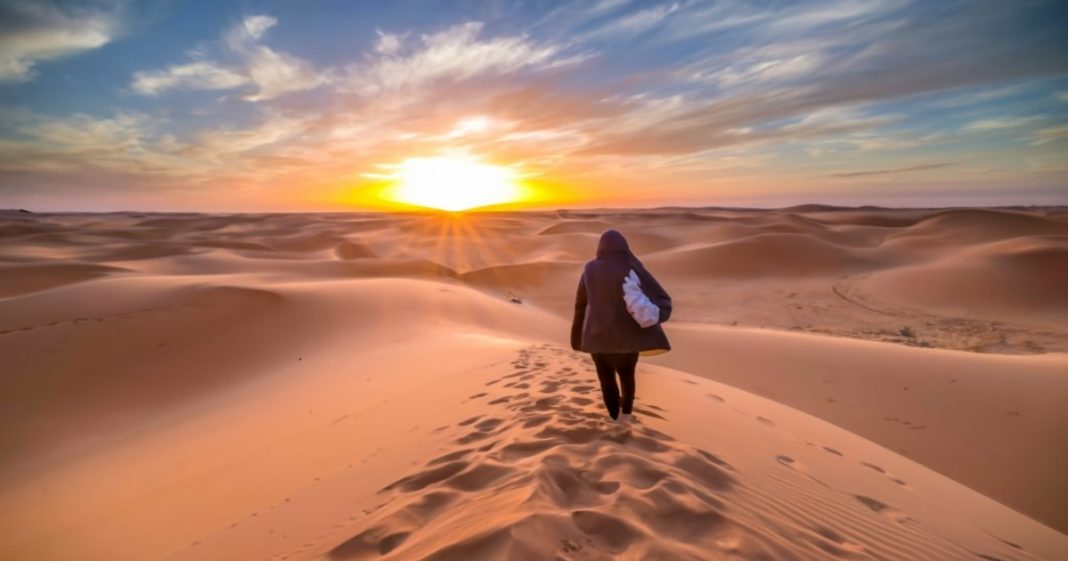Morocco in February, with its diverse landscapes and rich cultural heritage, is a captivating destination. February offers an ideal time to visit, providing pleasant weather and fewer crowds. With its layered history and vibrant markets, Morocco presents a chance to delve into the heart of Middle Eastern culture. Whether you’re drawn to historical sites or seeking an off-the-beaten-path adventure, Morocco has something for everyone. Join us as we guide you through the enchanting areas of this North African gem during February.
Weather in Morocco in February
Overview of February in Morocco
February in Morocco offers mild temperatures and occasional rainfall. The average temperature ranges from 10°C to 20°C (50°F to 68°F), creating comfortable conditions for outdoor activities. Travelers should pack layers to adapt to temperature fluctuations throughout the day.
Morocco’s climate varies by region, with coastal areas having milder winters than inland regions. In February, the Atlas Mountains may experience snowfall, attracting winter sports enthusiasts. Understanding these regional differences is crucial for planning an itinerary that aligns with your preferences.
Regional Variations
Coastal areas of Morocco enjoy relatively warmer weather during February compared to inland regions. For instance, Fez experiences moderate temperatures ranging from 8°C to 17°C (46°F to 63°F). On the other hand, Marrakech has slightly higher average temperatures of around 12°C to 21°C (54°F to 70°F). Meanwhile, Ifrane, located in the Atlas Mountains, can have sub-zero temperatures and snowfall during this time.
The regional variations allow travelers a diverse range of experiences within a single country. For example, exploring Fez’s ancient medina or venturing into the snowy landscapes of Ifrane provides contrasting but equally captivating experiences.
Ideal Clothing Choices
Visiting Morocco in February calls for layered clothing due to varying temperatures throughout the day and across different regions. Lightweight attire is suitable for warmer days while ensuring you also have warmer layers ready for cooler evenings or mountainous areas like Ifrane.
A waterproof jacket or umbrella is essential as there might be occasional rainfall during this period. This versatile wardrobe ensures comfort and preparedness amid changing weather conditions while exploring various parts of Morocco.
Best Places to Visit in Morocco in February
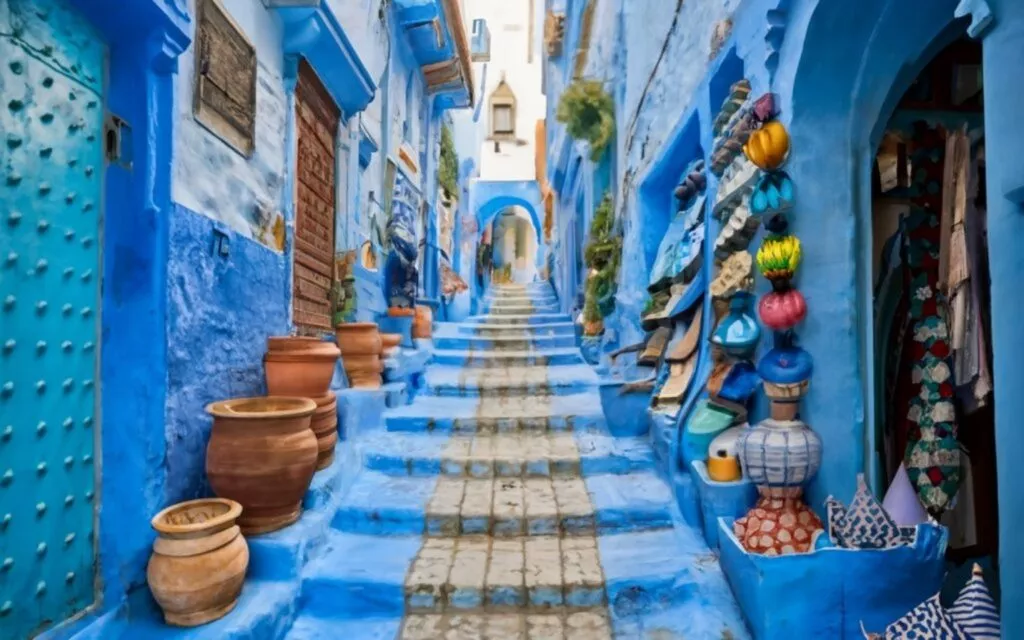
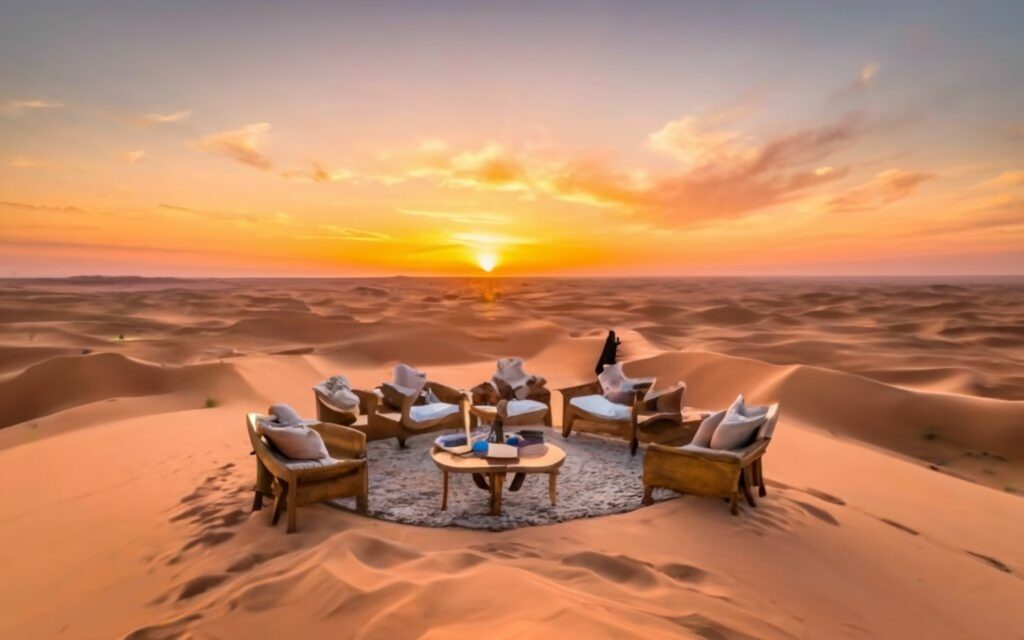
Marrakesh Sightseeing
Marrakesh, a city steeped in history and culture, is a must-visit destination when visiting Morocco in February. The city boasts vibrant markets known as souks where visitors can immerse themselves in the local atmosphere and shop for traditional crafts. Iconic landmarks like the Bahia Palace, Koutoubia Mosque, and Jardin Majorelle offer glimpses into the city’s rich heritage. Exploring the maze-like streets of the medina provides an authentic Moroccan experience while indulging in traditional cuisine adds a flavorful touch to any visit.
For instance:
- Visitors can wander through the bustling Djemaa el-Fna square and witness captivating street performances.
- Sampling delectable Moroccan dishes such as tagine or couscous at local eateries is an integral part of experiencing Marrakesh.
Desert Ventures
Embarking on a desert adventure during February offers pleasant temperatures for those eager to explore Morocco’s Sahara Desert. Cities like Merzouga or Zagora serve as gateways to this mesmerizing landscape. Camel trekking across the dunes presents an unforgettable experience while spending a night under the stars at a desert camp allows visitors to marvel at breathtaking sunsets over expansive landscapes.
Consider:
- Engaging with local guides who can provide insights into desert flora and fauna enhances the overall experience.
- Participating in sandboarding or quad-biking activities adds excitement to desert ventures.
Agadir Discovery
Agadir beckons with its beautiful beaches and lively nightlife scene along Morocco’s coast. Water sports enthusiasts will find plenty of opportunities to indulge their passion while others may prefer unwinding on sandy shores overlooking picturesque Atlantic views. Exploring Agadir’s bustling marina presents chances for strolls and perhaps even some souvenir shopping among its charming shops.
For example:
- The beachfront promenade offers numerous cafes where visitors can savor fresh seafood while enjoying stunning ocean vistas.
- Nightlife options range from cozy beach bars serving refreshing cocktails to energetic clubs hosting live music events.
Tafraoute Exploration
Tafraoute nestled within the Anti-Atlas Mountains unveils stunning landscapes that captivate travelers seeking natural beauty off-the-beaten-path destinations offer. The Painted Rocks stand out as unique rock formations worth exploring alongside picturesque valleys perfect for hiking excursions. Immersing oneself in Berber culture by visiting local villages provides insight into their traditional way of life amidst serene surroundings.
Moreover:
- Tafraoute hosts an annual almond blossom festival during February when pink blooms blanket surrounding orchards creating enchanting scenery.
Travel Tips for February
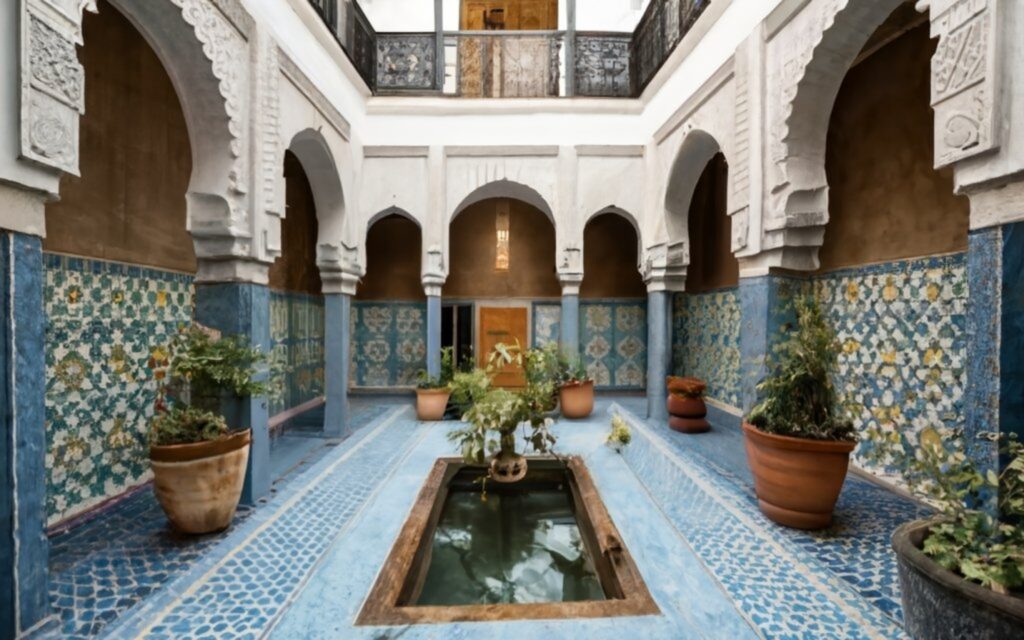
Transportation Advice
Morocco boasts an extensive transportation network, providing various options for getting around the country. For long-distance travel between major cities, trains are a convenient and comfortable choice. They offer a reliable and scenic way to explore Morocco’s diverse landscapes. Shared taxis or grand taxis are commonly used for shorter journeys within cities or between towns. These taxis provide flexibility and are often more cost-effective than private transportation options.
When traveling around Morocco in February, it’s essential to consider the weather conditions, especially if you plan to visit remote areas or mountainous regions where snowfall may affect road accessibility. Planning your transportation can help ensure a smooth and enjoyable travel experience during this time of year.
Accommodation Options
In February, travelers visiting Morocco have a wide array of accommodation options catering to different budgets and preferences. From luxurious riads in Marrakesh with traditional Moroccan architecture and design to beachfront resorts in Agadir offering stunning ocean views, there is something for every traveler. Moreover, smaller towns boast cozy guesthouses that provide an authentic local experience.
Given the popularity of tourism during peak seasons like February due to favorable weather conditions, it is advisable to book accommodation well in advance. This proactive approach helps secure preferred locations at competitive rates while avoiding last-minute availability issues.
Cultural Etiquette
Respecting local customs and traditions is crucial when visiting Morocco in February or any other time of the year. It’s important to dress modestly out of respect for Moroccan culture, particularly when visiting religious sites such as mosques or shrines. This means wearing clothing that covers the shoulders and knees.
Engaging with locals respectfully by using common phrases such as “Salam” (Hello) demonstrates cultural awareness and appreciation for Moroccan etiquette practices. Exchanging pleasantries before engaging in conversation showcases politeness—a value deeply ingrained within Moroccan society.
Furthermore, adopting traditional Moroccan etiquette—such as using your right hand for greetings and meals—can enhance cultural immersion experiences while showcasing respect for local customs.
Festivals and Celebrations
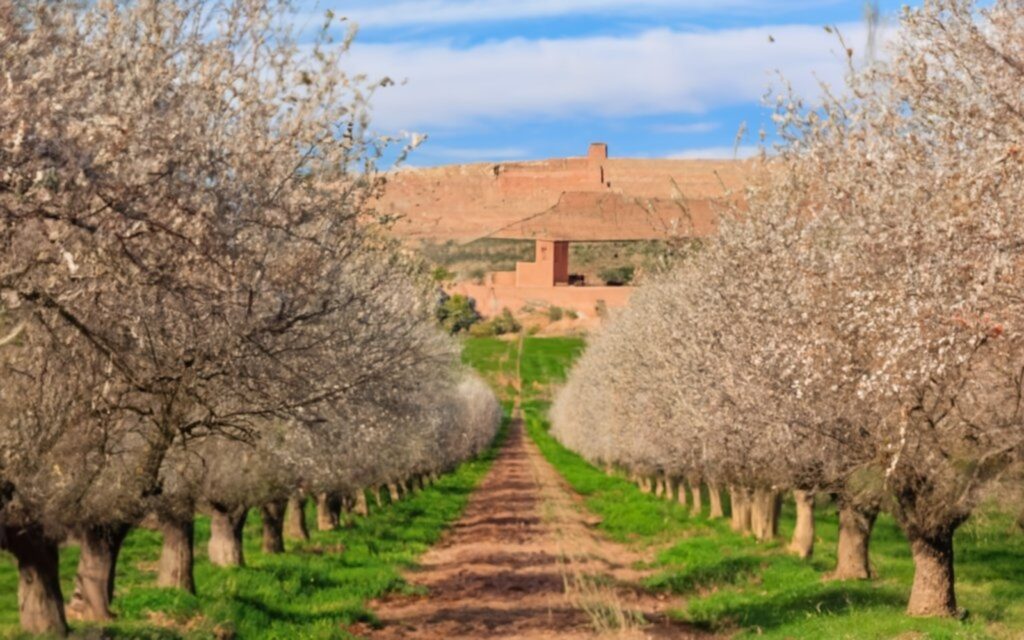
Almond Blossom Festival
In February, Morocco comes alive with the vibrant Almond Blossom Festival in Tafraoute. The festival celebrates the blooming almond trees, offering a unique cultural experience. Visitors can immerse themselves in traditional music, and dance performances, and savor local almond-based delicacies. The landscape transforms into a picturesque scene with pink and white blossoms adorning the surroundings.
The Almond Blossom Festival is an excellent opportunity to witness the rich cultural heritage of Morocco while enjoying nature’s beauty. Tourists can capture stunning photographs amidst the blooming almond trees or simply revel in the festive atmosphere.
Reasons to Visit Morocco in February
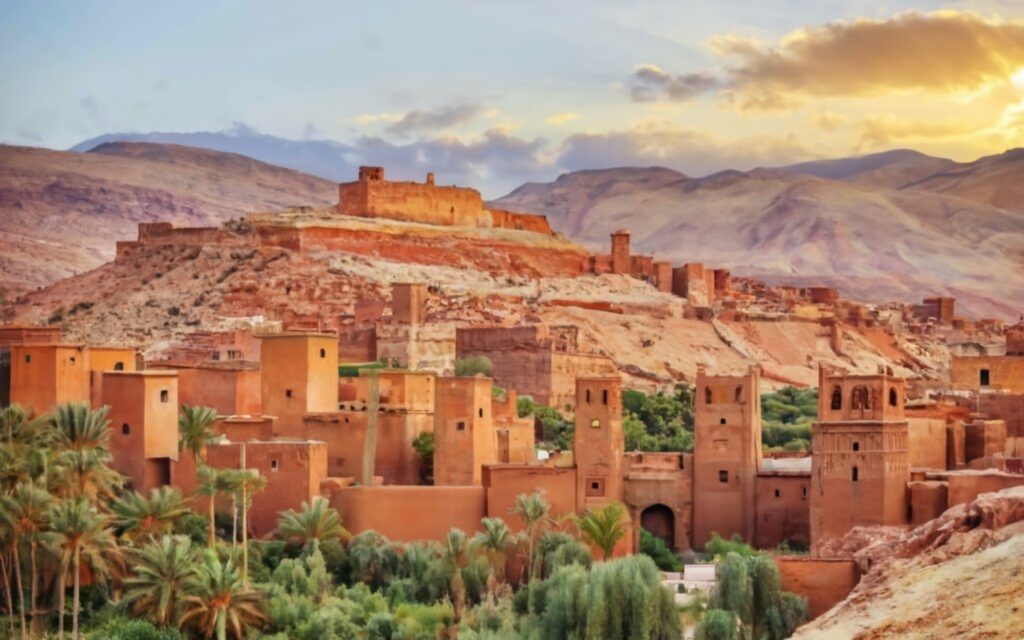
Lower Costs and Crowds
Visiting Morocco in February presents the opportunity to enjoy lower costs for accommodations and attractions. With fewer tourists compared to peak seasons, travelers can explore popular sites without enduring large crowds. This off-peak travel period allows visitors to take advantage of discounts and promotions, leading to cost savings on various aspects of their trip. Embracing Morocco in February also means a more relaxed travel experience, as there is less hustle and bustle at major tourist spots.
For instance:
- Travelers can secure budget-friendly accommodations or avail themselves of discounted tour packages during this time.
- Exploring iconic landmarks like bustling markets or historical sites becomes more enjoyable without the overwhelming presence of crowds.
The reduced number of tourists enables individuals to fully immerse themselves in the local culture and interact with residents without feeling rushed or overwhelmed by large groups.
Unique Attractions
February offers an ideal window for experiencing some of Morocco’s unique attractions, such as the captivating blue city of Chefchaouen. Known for its striking blue-washed buildings, this charming town provides an Instagram-worthy backdrop for memorable photos. Travelers have the chance to visit ancient Roman ruins at Volubilis, offering a glimpse into Morocco’s rich history.
Moreover:
- Exploring Essaouira, a picturesque coastal town known for its vibrant art scene and serene beaches, is another highlight during this time.
- The Ait Ben Haddou Kasbah stands out as a UNESCO World Heritage site that showcases stunning traditional Moroccan architecture.
These distinctive attractions offer visitors an authentic taste of Moroccan heritage while providing ample opportunities for cultural exploration.
Recommended Starting Points

Optimal Itineraries
Crafting your itinerary for visiting Morocco in February is crucial to ensure you make the most of your trip. Whether you’re interested in exploring bustling cities, embarking on desert adventures, or unwinding along the coast, structuring a diverse travel experience is essential. For instance, spending a few days in Marrakesh can serve as an excellent starting point before venturing into other regions based on your preferences. You might consider immersing yourself in the vibrant markets and historical sites of Marrakesh before heading out to explore the tranquil Atlas Mountains or experiencing the unique culture of coastal towns like Essaouira.
When planning your itinerary for February, keep in mind that certain areas may offer distinct experiences during this time. For example, while coastal cities such as Agadir and Essaouira might provide milder weather ideal for beach activities and water sports, inland destinations like Fes or Merzouga could offer opportunities for unique cultural festivals or excursions into the Sahara Desert.
Starting Cities
Selecting an appropriate starting city significantly impacts your overall travel experience when visiting Morocco in February. While Marrakesh stands out as a popular choice due to its well-connected airport and central location within the country, other viable options include Casablanca, Tangier, or Fes. Your decision should be guided by factors such as proximity to desired destinations within Morocco and available transportation options.
For instance, if you prioritize exploring northern regions such as Chefchaouen’s picturesque blue streets or Tetouan’s rich Andalusian heritage early on during your trip, considering Tangier as a starting point may prove beneficial. Alternatively, choosing Fes allows easy access to both northern attractions and eastern gems like Ifrane’s Swiss-inspired architecture and nearby cedar forests where Barbary macaques roam freely.
Activities to Enjoy
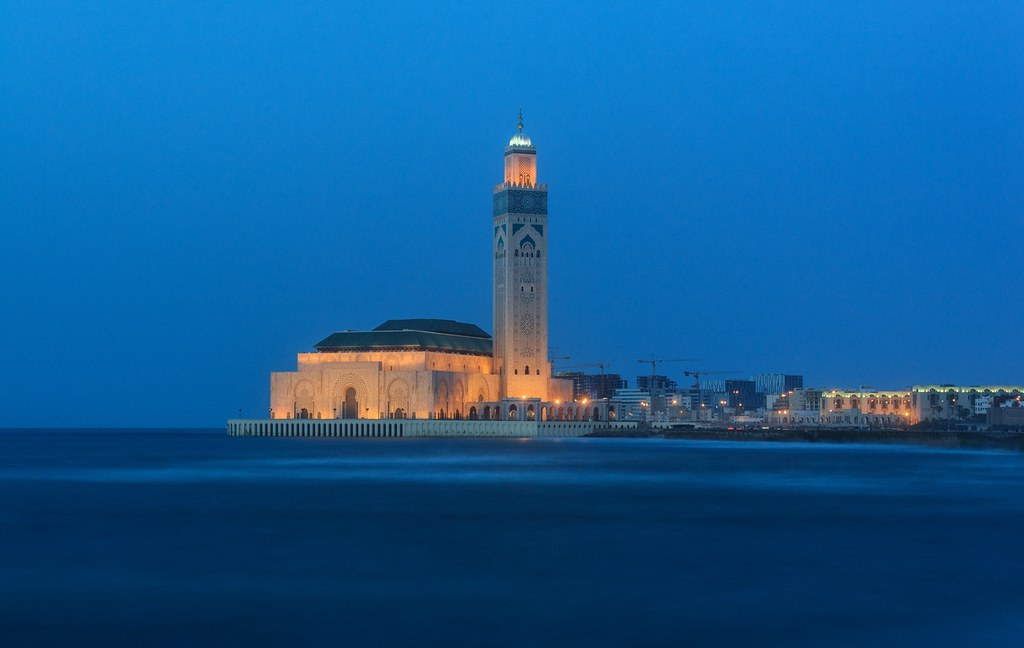
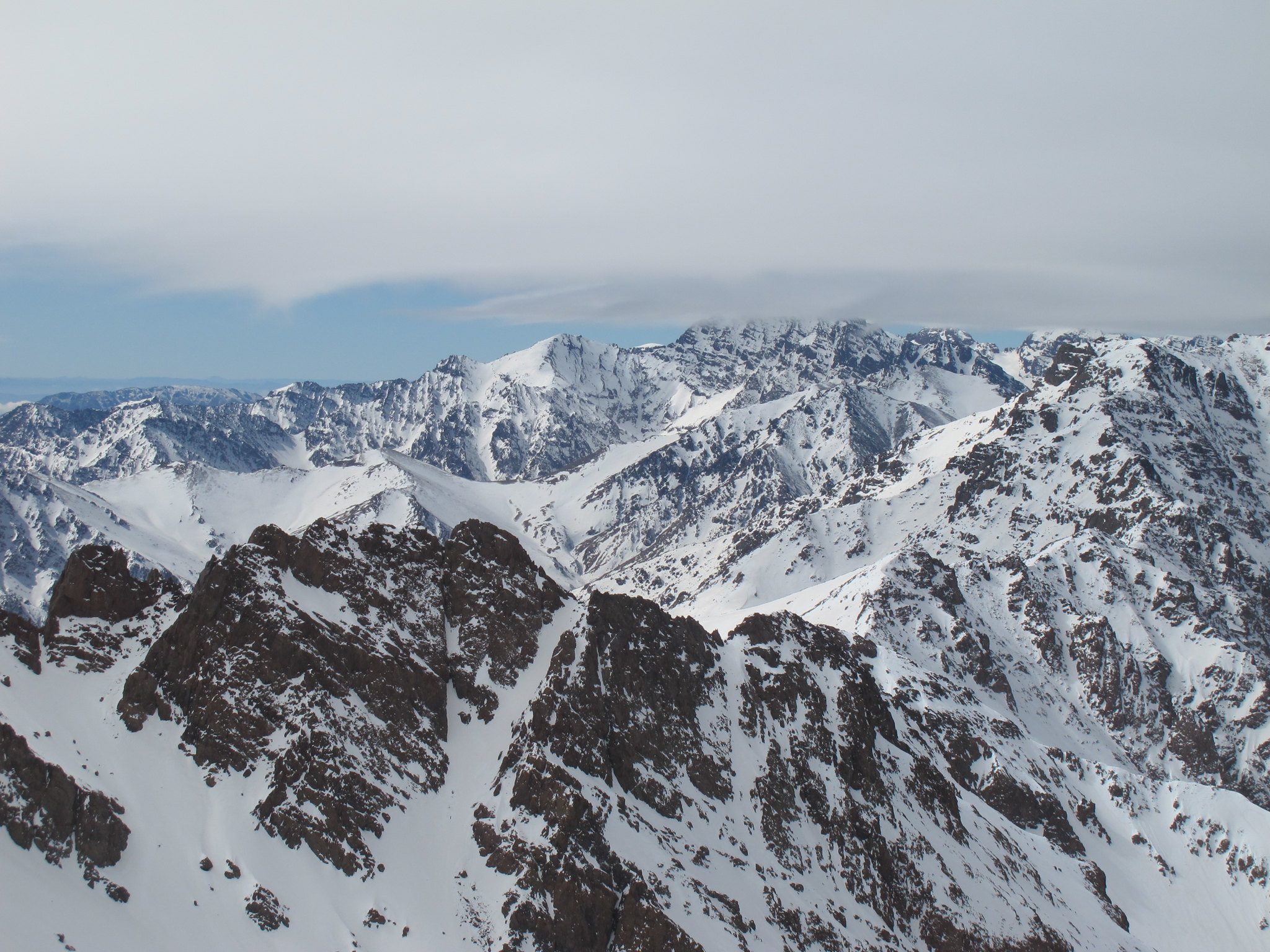
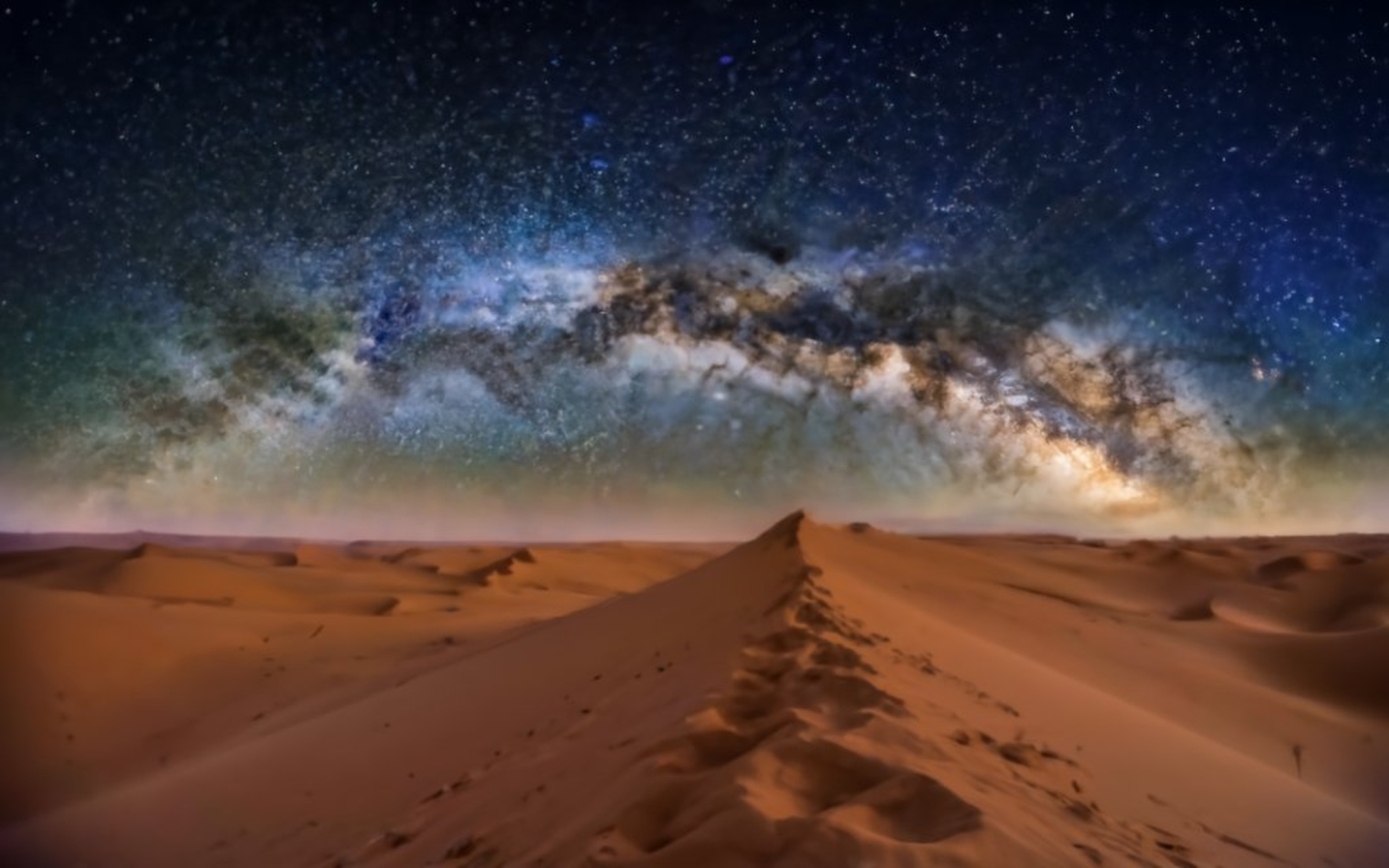
Merzouga Desert Charm
Ah, Merzouga in February! It’s the perfect time to escape the winter blues and bask in the golden glow of the Moroccan Sahara. Forget the biting winds and snowdrifts; here, you’ll be greeted by warm, sunny days and crisp, starry nights.
Sunny Delights and Desert Adventures
February in Merzouga is one of the driest and sunniest months, with an average high of 68°F (20°C). The days are perfect for exploring the vast Erg Chebbi dunes, the highest in Morocco. Imagine yourself trekking up the golden slopes, feeling the soft sand squish between your toes, and marveling at the endless sea of dunes stretching towards the horizon.
Camel Caravans and Berber Magic
For a truly authentic experience, hop on a camel and join a traditional caravan through the dunes. These gentle giants will carry you past oases dotted with palm trees, while skilled Berber guides share stories of their nomadic way of life. After sunset, gather around a crackling campfire, sipping aromatic mint tea and listening to enchanting Berber music under a blanket of stars.
Festive Feasts and Starry Spectacles
February also coincides with the vibrant Fantasia, a traditional equestrian festival showcasing daring horsemanship and colorful costumes. Immerse yourself in the joyful atmosphere, savor delicious local delicacies like tagines and couscous, and let the rhythm of the music carry you away.
Cozy Camps and Desert Luxury
After a day of adventure, retreat to your comfortable desert camp. Whether you choose a traditional Berber tent or a luxurious glamping option, you’re in for a treat. Cozy up under warm blankets, sip hot Berber tea, and watch the mesmerizing colors of the sunset paint the dunes. As darkness falls, gaze at the breathtaking Milky Way overhead, a sight you’ll never forget.
Skiing in the Atlas Mountains
February is an ideal time to experience skiing in the Atlas Mountains. The Oukaïmeden ski resort, located near Marrakesh, offers a thrilling skiing adventure with its well-maintained slopes and breathtaking mountain views. Visitors can indulge in various winter sports activities such as skiing, snowboarding, and sledding while taking in the stunning natural scenery. The crisp mountain air and powdery snow create a picturesque setting for an unforgettable skiing experience.
The Atlas Mountains provide a perfect backdrop for outdoor enthusiasts seeking an exhilarating escape. Apart from skiing, visitors can also explore the surrounding areas through hiking trails or simply revel in the serene beauty of nature. With numerous ski resorts and opportunities for adventure sports, including trekking and mountaineering, the Atlas Mountains offer an immersive experience for travelers looking to make the most of their visit to Morocco in February.
Historical Casablanca
In addition to outdoor adventures, exploring historical landmarks in Casablanca promises a captivating journey through Morocco’s rich heritage. The city boasts an intriguing blend of modernity and tradition that captivates visitors from around the world. A visit to the iconic Hassan II Mosque provides insight into Islamic architecture while offering panoramic views of the Atlantic Ocean. Exploring Casablanca’s vibrant Medina allows travelers to immerse themselves in traditional Moroccan culture by browsing through bustling markets filled with local crafts and culinary delights.
Furthermore, strolling along the Corniche presents a delightful opportunity to soak up stunning coastal views while enjoying fresh sea breezes. For history enthusiasts, museums like Villa des Arts de Casablanca showcase contemporary art exhibitions alongside cultural events that shed light on Morocco’s artistic legacy. By visiting architectural landmarks such as Mahkama du Pacha or Place Mohammed V Square, travelers gain valuable insights into Casablanca’s historical significance.
Essential Information for Travelers
Safety Measures
When visiting Morocco in February, it’s crucial to prioritize safety. While the country is generally safe for tourists, it’s advisable to take common precautions. Be cautious of pickpockets, especially in crowded areas and markets. It’s also essential to avoid displaying valuable belongings openly, such as expensive jewelry or large amounts of cash.
Staying informed about local customs is important when traveling in Morocco. Respecting cultural norms and traditions can help ensure a smooth and enjoyable trip. Keeping an eye on any travel advisories issued by your government before and during your trip can provide valuable insights into potential safety concerns or developments.
Weather Preparedness
Morocco experiences varying weather conditions in February, so packing appropriately is essential for a comfortable trip. Since the coastal regions may have milder temperatures compared to inland areas, travelers should be prepared for diverse climates within the country.
Packing layers of clothing that can be added or removed as needed will allow visitors to adapt to changing temperatures throughout the day. Carrying sunscreen and sunglasses is crucial for protection against sunny days while exploring outdoor attractions or enjoying time at the beach along the Moroccan coast.
Checking weather forecasts before heading out each day enables travelers to plan their activities accordingly. This ensures that they are prepared for any unexpected changes in weather conditions that could impact their plans.
Embracing Winter Vistas
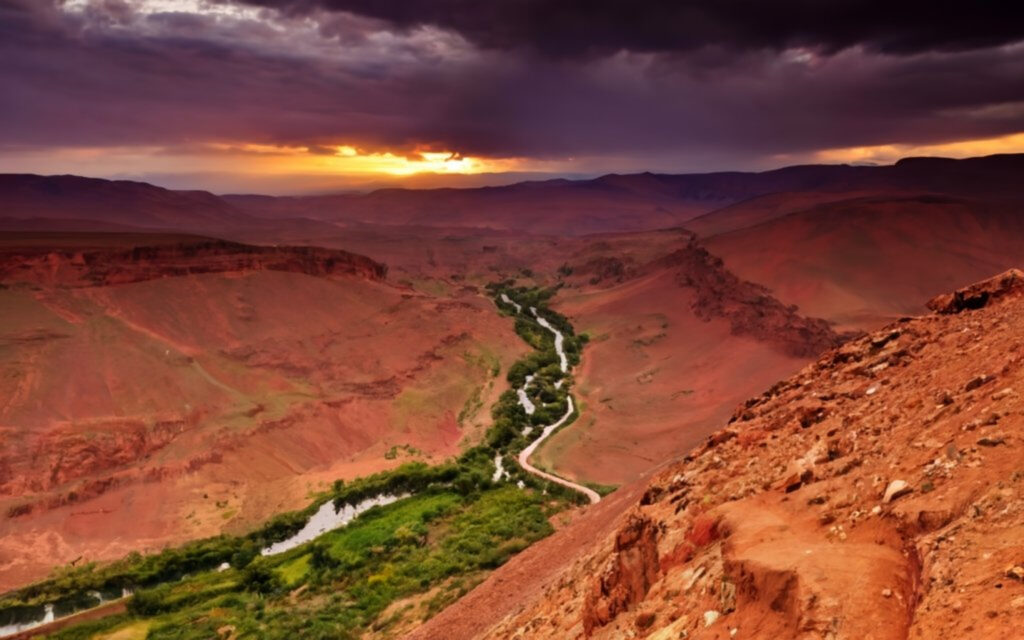
Climate Comparison
Morocco’s climate varies across regions, from the Mediterranean along the coast to continental in inland areas. Coastal cities like Agadir have milder winters compared to mountainous regions such as the Atlas Mountains. Understanding these climate differences will help you pack accordingly and plan your activities.
In coastal areas like Agadir, February offers relatively mild temperatures and a good number of sunny days, making it an ideal destination for those seeking a warmer winter escape. On the other hand, if you are planning to visit the Atlas Mountains or other inland areas during this time, be prepared for potentially colder weather with occasional snowfall.
Snowboarding Options
For snow sports enthusiasts visiting Morocco in February, the Atlas Mountains offer exciting opportunities for snowboarding. The Oukaïmeden Ski Resort is one of the prime destinations providing slopes suitable for both beginners and experienced snowboarders.
Imagine gliding down snowy slopes surrounded by stunning mountain scenery – that’s what awaits you at Oukaïmeden Ski Resort! The thrill of experiencing winter sports against the backdrop of breathtaking natural beauty makes it an unforgettable experience for visitors seeking adventure during their trip to Morocco in February.
Conclusion
Visiting Morocco in February offers a unique blend of cultural experiences, breathtaking landscapes, and vibrant festivities. From exploring the snow-capped Atlas Mountains to immersing oneself in the rich heritage during the Almond Blossom Festival, February presents an ideal opportunity for travelers seeking an authentic Moroccan adventure. The diverse array of activities, coupled with favorable weather conditions in various regions, ensures that visitors can make the most of their trip. With careful planning and a spirit of curiosity, a February visit to Morocco promises an enriching and memorable journey.
For those considering a February trip to Morocco, delving into the country’s winter wonders and engaging in local traditions will undoubtedly create lasting memories. Whether it’s capturing the beauty of snow-dusted landscapes or savoring traditional cuisine at a local market, embracing the unique opportunities that this time of year offers is sure to leave a lasting impression.
Frequently Asked Questions
February is an excellent time to visit Morocco, especially for travelers who enjoy milder temperatures and fewer crowds. While the evenings can be cool, daytime temperatures are pleasant for exploring the country’s diverse landscapes and cultural attractions.
In February, visitors can experience the vibrant Almond Blossom Festival in Tafraoute, where locals celebrate the blooming almond trees with music, dance, and traditional food.
Travelers visiting Morocco in February should pack layers to accommodate temperature fluctuations between day and night. It’s also advisable to book accommodations and tours in advance due to increased tourism during this month.
Tourists visiting Morocco in February can partake in various activities such as hiking through scenic mountain trails, exploring ancient medinas without sweltering heat, camel trekking across desert dunes, or indulging in winter sports like skiing or snowboarding at resorts near Ifrane.
Embracing winter vistas allows visitors to witness stunning contrasts of snowy peaks against desert landscapes. This unique perspective adds depth to their travel experience by showcasing diverse natural beauty that may not be present during other seasons.

